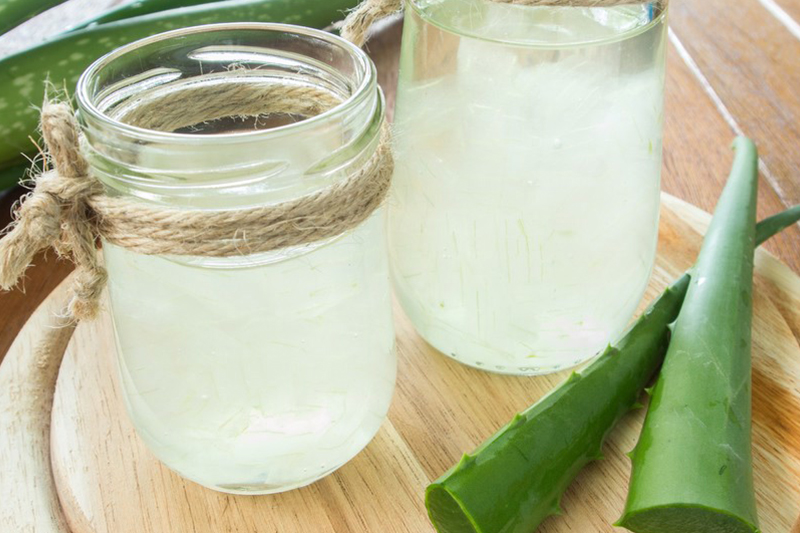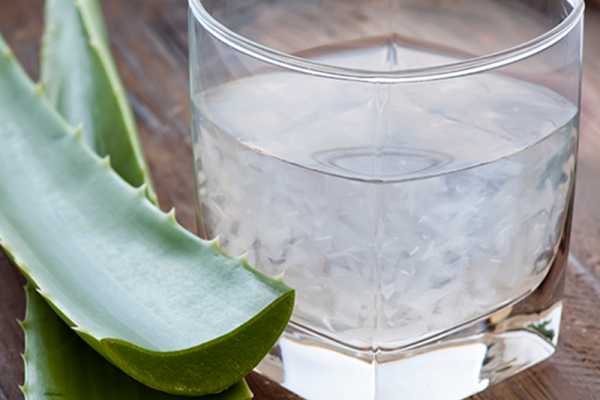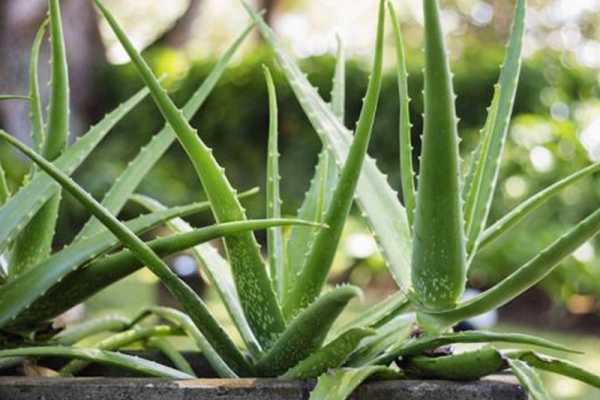
Aloe comes from the Aloe plant also known as the lily of the desert. This plant looks similar to a cactus and can be found at most farmer’s markets. Both the gel and the juice come from this plant, just different parts of it. Aloe Vera juices are made from the bitter part of the leaf, under the green skin of the leaf known as Aloe Latex. There is very little to suggest that this part of the leaf carries any health benefits but it can be highly laxative. Aloe Vera Gels are made from the inner ‘gel’ of the leaf which seems to be the most beneficial part of the plant.
Aloe Vera Gel
–

–
The central portion of aloe vera leaves contains a clear gel that is often used as a topical ointment. The gel makes a skin-soothing salve for sunburns and is a remedy for minor cuts and burns as well. In fact, the University of Maryland Medical Center, or UMMC, reports that active compounds in aloe vera gel known as glycoproteins and polysaccharides may reduce pain and inflammation while stimulating skin growth and healing. Other uses for aloe vera gel include treating psoriasis and genital herpes. The aloe from the leaf is a clear gel, but is often dyed green in commercial products. It is sold in a bottle and can either be squeezed out or pumped like soap. Aloe vera gel can be found in hundreds of skin products, including lotion and sunblock.
Aloe Vera Juice
–

–
Aloe vera juice is derived from the outer parts of the leaf and is consumed orally as a health tonic. The same skin-healing substances that exist in the gel are present in the juice and have immune-system enhancing effects. The National Center for Complementary and Alternative Medicine reports that aloe vera juice is used to treat asthma, epilepsy, diabetes and osteoarthritis. And while more research is needed to determine its effects as a diabetes treatment, the UMMC notes that preliminary evidence shows it has a blood-sugar lowering effect on type-2 diabetics. Additionally, the skin of the aloe leaf yields a bitter liquid that is a potent laxative. When taken daily, aloe vera juice provides digestive benefits. Drink 2 to 8 oz. aloe vera juice every day to reap the benefits of the herb’s natural healing properties. The juice is the liquid form of aloe vera, and the texture is much less thick than the gel.
Components in Aloe Vera
Polysaccharides (carbohydrates) and fatty acids – Act as natural humectant that traps and holds moisture
Vitamin A, B vitamins, folic acid, and vitamin C – all great for hair growth, scalp healing and hair strength
Protein (lectin) – adds layers to the hair for strength, great for women with relaxed hair
Enzymes and Amino Acids – great for growth, and hair repair and strength
Some of the minerals found in aloe vera include calcium, sodium, iron, potassium, chromium, magnesium, manganese, copper, and zinc. It has antioxidant, antibiotic, cell growth stimulator, anti-inflammatory, astringent, and pain/scar inhibitor properties.
–

–
Some facts about Aloe Vera
There are over 250 different species of aloe plants; however, only five species are recognized as having nutritional and medicinal value. There are actually 15 poisonous types of aloe vera plants. Aloe vera plants are not mature until they are 4 years old, and the aloe vera should not be extracted until that time.
Benefits
The nutrients and high levels of minerals, amino acids, B12 vitamin and enzymes in aloe vera contribute to its healing properties.Aloe vera helps cleanse the digestive system, provide energy, hydrate and sooth damaged skin and supports the immune system. Aloe vera juice/gel can even be used as a weight loss tool, as it stimulates the metabolic rate in the liver cells which helps burn energy. Aloe vera provides a multitude of benefits at low cost and is readily available in most drugstores.
–

–
Side Effects
As a laxative, aloe vera juice causes bothersome cramping and discomfort, which is why other herbal laxatives are preferred for this use. The juice may also interact with certain medications, such as diabetes drugs. Aloe vera gel is generally safe, and is not linked to any significant side effects. To avoid irritation, however, you should never apply the gel to open wounds.
For hair
–

–
The aloe juice reduces frizz by helping the cuticles to lie flat allowing your hair to appear naturally shiny. You will notice the strength in your strands after just one application.The gel on the other hand is great for styling because of its composition, you can use to slick your edges, or create a sleek style. But the gel, like the juice makes the hair just as healthy when used daily with the same benefits as described above.Although aloe vera is a common ingredient in commercial skin-care products, you can purchase your own plant and extract the juice and gel by simply breaking the leaves to access the inner components. Other forms you might experiment with include capsules, tablets and creams, which are available over the counter at health food stores and pharmacies.